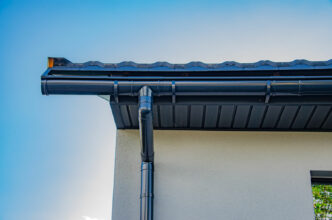Choosing and buying a suitable construction plot can be more difficult than choosing and buying an apartment. Before signing the sales contract, it is worth paying attention to a few details. This saves problems that might appear later on. Here is a list of 10 things that we should pay attention to when choosing and buying a plot for a house.
Appropriate plot size
When buying a plot for building a house, first of all, pay attention to an appropriate size of the plot. It should fit our target house and a garden. The optimal area for building a single-family house is at least 700 m2. A plot which is too large will be too expensive and a big part of it may remain undeveloped.
Appropriate shape of the plot
The shape of the plot is also an important aspect. Irregularly shaped ones, e.g. triangles, trapezoids, may generate problems with the location of the designed house. If the plot is less than 16 m wide, it is difficult to find a suitable project, and what remains will be ordering an individual, much more expensive project.
Arrangement of the plot in relation to the directions of the world
One should also pay attention to the arrangement of the plot in relation to the directions of the world and access to the road. The most advantageous location is the entrance to the plot from the north, and the garden from the south. This is also important if we plan to use renewable energy sources in our home, e.g. photovoltaic panels.
Landform features
Before buying a plot, it is also worth checking the topography. Numerous slopes of land can cause problems when designing a home. I can also generate costs related to adapting the construction technology to the shape of the plot. It is also more difficult to design a garden on such a plot.
Access to the plot
The plot must have an access road with the width specified by the local authorities. Most often, it is a public road. In the event that it is necessary to access other plots that we do not own, it will be necessary to establish an easement of access. The physical access to the plot does not always guarantee formal access to it.
Soil investigations
It is worth deciding to do soil research, e.g. by carrying out a series of boreholes. This allows you to better choose the foundation structure or to know the groundwater level. Soil surveys also reveal information that the seller may wish to hide: there may have been a landfill in the past, the ground may be contaminated, there may be peat-laden land.
Access to facilities
The basis for the purchase of a building plot is its access to electricity. The fact that there is a power pole nearby is not yet a sufficient guarantee that electricity is going to be available. Check with your energy supplier about the power connection options. It is also worth checking whether it is possible to connect the plot to the water supply.
The neighbouring area around the plot
Before buying a plot, you should also check the neighbouring area. It is very important where the nearest shop is, what is the distance to educational institutions and the accessibility in the form of buses, minibuses or a train stop. It is worth going there in the evening at least once to check what the area looks like after it gets dark, and whether it is safe.
The legal status of the property
It is very important to check the legal status of the property before purchasing it. In the land and building register, available at the geodesy department of the local starost’s office, you can obtain extracts from the land register and a map detailing the plot area, land class, owner data and the land and mortgage register number.
Designation of the plot
It happens that in the offers the plot is listed as a construction plot, but after analyzing the documentation, it turns out that it is agricultural land or land intended for service or industrial construction. Therefore, the purpose of the plot should always be verified in the spatial development plans available at the municipal office.


